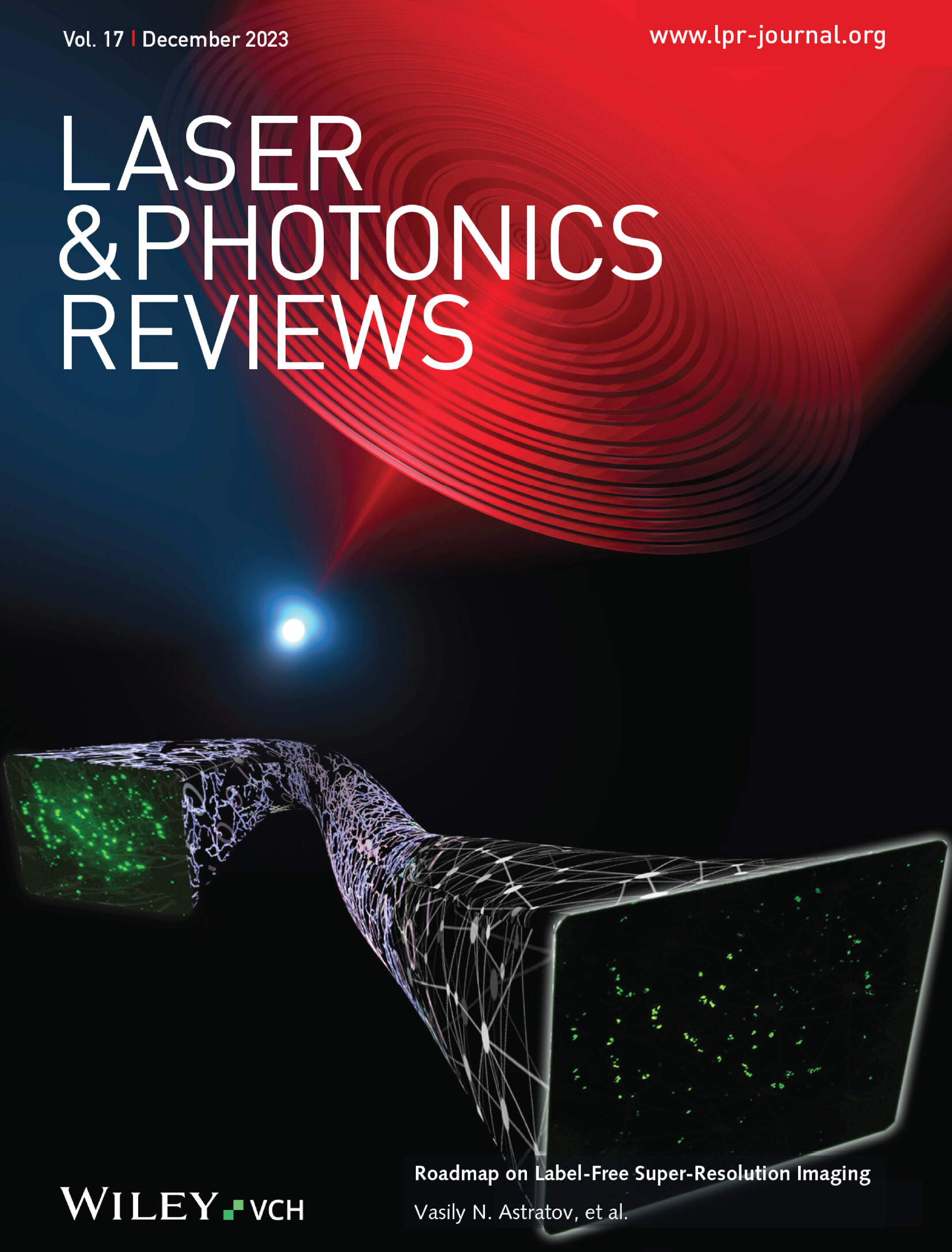IF 9.8
1区 物理与天体物理
Q1 OPTICS
引用次数: 0
摘要
推动太赫兹技术发展的主要因素是室温操作、高灵敏度、高集成度和宽带探测能力。然而,太赫兹探测器中的传统半导体材料仍然面临着各种障碍,尤其是错综复杂的集成和加工问题。二维拓扑材料独特的电子结构和非三维拓扑特性为高性能太赫兹低能光子探测带来了新的可能性和前景。在这里,天线与拓扑绝缘体 GeBi4Te7 和超短信道集成技术相结合,通过压缩和定位空间维度的光场,显著增强了受限区域的电磁响应。这种策略通过增强的光物质相互作用实现了热载流子的优先流动,同时满足了探测器带宽和响应速度增强的要求。探测器在 0.81 太赫兹时的灵敏度为 3.04 A-W-1,噪声等效功率小于 15.8 pW-Hz-0.5,响应时间小于 5 µs。这些研究成果为开发高灵敏度、高集成度和宽带太赫兹探测器提供了一个崭新的机会,使人们能够探索各种应用领域。本文章由计算机程序翻译,如有差异,请以英文原文为准。

Sub-Skin-Depth Nanoslit Integrated Topological Insulator Devices for Self-Driven Broadband Terahertz Detection and Imaging
The advancement of terahertz technology is primarily fueled by the imperative for room-temperature operation with high sensitivity, high integration, and broadband detection capabilities. Nevertheless, the traditional semiconductor materials in terahertz detectors continue to grapple with obstacles, notably intricate integration and processing complexities. The unique electronic structures and non-trivial topological properties of two-dimensional topological materials bring new possibilities and perspectives for high-performance terahertz low-energy photon detection. Here, an antenna combined with the topological insulator GeBi4Te7 and an ultrashort channel integration technique is utilized to significantly enhance the electromagnetic response in a confined region by compressing and localizing the optical field in the spatial dimension. This strategy achieves a preferential flow of hot carriers through enhanced light-matter interactions while satisfying the enhanced bandwidth and response speed of the detector. The sensitivity of the detector is 3.04 A·W−1 at 0.81 THz with a noise equivalent power of less than 15.8 pW·Hz−0.5 and a response time of less than 5 µs. These research results provide a brand-new opportunity to develop highly sensitive, highly integrated, and broadband terahertz detectors, enabling exploration across a diverse array of application domains.
求助全文
通过发布文献求助,成功后即可免费获取论文全文。
去求助
来源期刊
CiteScore
14.20
自引率
5.50%
发文量
314
审稿时长
2 months
期刊介绍:
Laser & Photonics Reviews is a reputable journal that publishes high-quality Reviews, original Research Articles, and Perspectives in the field of photonics and optics. It covers both theoretical and experimental aspects, including recent groundbreaking research, specific advancements, and innovative applications.
As evidence of its impact and recognition, Laser & Photonics Reviews boasts a remarkable 2022 Impact Factor of 11.0, according to the Journal Citation Reports from Clarivate Analytics (2023). Moreover, it holds impressive rankings in the InCites Journal Citation Reports: in 2021, it was ranked 6th out of 101 in the field of Optics, 15th out of 161 in Applied Physics, and 12th out of 69 in Condensed Matter Physics.
The journal uses the ISSN numbers 1863-8880 for print and 1863-8899 for online publications.

 求助内容:
求助内容: 应助结果提醒方式:
应助结果提醒方式:


